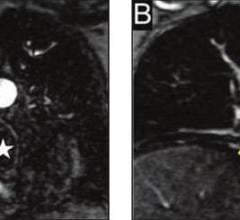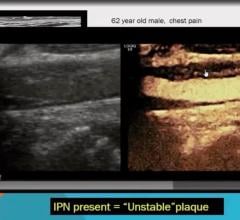November 18, 2009 – New, joint guidelines from the American College of Cardiology (ACC), the American Heart Association (AHA) and the Society for Cardiovascular Angiography and Interventions (SCAI), focus updates on the management of patients with ST-elevation myocardial infarction (STEMI) and percutaneous coronary intervention (PCI).
The guideline update incorporates several changes, including:
• Use of a fractional flow reserve (FFR) pressure wires to gauge whether plaque build-up in a particular area is actually interfering with blood flow and if a stent is needed.
• Use of aspiration thrombectomy to remove clots causing a heart attack before a stent is placed.
• Use of the new anti-clotting medication prasugrel (Effient), an alternative to clopidogrel (Plavix) for patients treated with PCI.
• Recommendations for use of a variety of blood thinners and anti-clotting medications before, during or after PCI.
• There are broader recommendations on the types of X-ray dye that may be safely used to view the coronary arteries during PCI in patients with chronic kidney disease.
The fast-track document, released at AHA 2009, will help healthcare providers interpret the latest clinical research on two important and inter-related areas of cardiology, and quickly put this new knowledge into clinical practice.
“The focused update is a way of responding quickly to new information that will benefit patients,” said Sidney C. Smith, Jr., M.D., a professor of medicine and director of the Center for Cardiovascular Science and Medicine at the University of North Carolina at Chapel Hill and chair of the writing group. “We were able to look over a year of major studies and incorporate the most valuable findings into the existing guidelines.”
One of the most important new recommendations is for each community to develop an organized system of emergency care for patients who are having a heart attack, modeled after the AHA’s Mission: Lifeline initiative and the ACC’s Door-to-Balloon (D2B) campaign. This plan would include protocols for identifying heart attack patients even before they reach the hospital and directing ambulances to medical centers capable of rapidly performing PCI to open the blocked coronary artery. The plan would also include protocols for managing heart attack patients who initially arrive at hospitals not equipped to perform PCI, including arrangements for rapid transfer to a PCI center, whenever possible.
In addition, the guidelines address the management of patients who initially go to a non-PCI hospital and cannot be transferred quickly. These patients should be treated with clot-busting drugs, according to the guidelines. Afterward, if patients are judged to be high-risk, it is reasonable to transfer them to a PCI center without delay, rather than waiting to observe whether the clot-busters are successful, as is common practice today.
Over the last few years, communities around the country have begun to put in place organized systems of heart attack care, but they are not yet widespread. Community members can play an important part in getting the ball rolling, said Frederick G. Kushner, M.D., medical director of The Heart Clinic of Louisiana and a clinical professor of medicine at Tulane School of Medicine in New Orleans and co-chair of the writing group.
“Patients should become advocates and urge their local hospital to become part of a community network that follows the recommendations of the Mission: Lifeline program,” he said. “It’s the best way to quickly activate the chain of events that are critical to opening a blocked artery causing a heart attack.”
Another major change in the guidelines is greater acceptance of stenting for the treatment of the left main coronary artery. The left main is one of the two coronary arteries that come directly off of the aorta, before it splits into smaller branches. Because a complete blockage of the left main coronary artery would cut off the blood supply to the majority of the heart, bypass surgery has long been the recommended treatment for patients with a narrowing in this artery. Recent studies, however, have shown that in certain patients, stenting of the left main is safe and effective. As a result, the new guidelines now allow for left main stenting as an option when procedural complications are likely to be low and the patient faces an increased risk if treated surgically.
“There is mounting evidence that stenting of the left main coronary artery, under certain circumstances, does carry a reasonably good outcome,” said Spencer B. King, III, M.D., president of the Saint Joseph’s Heart and Vascular Institute and a professor of medicine emeritus at Emory University School of Medicine in Atlanta and co-chair of the writing group. “Now stenting might be considered, based on the specific anatomy of the coronary arteries and the risk profile of the patient.”
“People have heard a lot about evidence-based medicine,” said Dr. King. “These guidelines are a distillation of all the relevant evidence. They will help physicians to make the best choices for their patients.”
“The new process of rapidly updating guidelines will allow practioners the opportunity to utilize contemporary evidence-based medicine to make critical decisions. Our patients will have more treatment options because the new guidelines include provisions for stenting left main and complex three-vessel coronary artery disease and stress the use of physiologic lesion assessment to optimize clinical outcomes,” said Steven R. Bailey, M.D., FACC, FSCAI, chief of the Dolph and Janey Briscoe Division of Cardiology at University of Texas Health Sciences Center at San Antonio, SCAI president, and a representative of SCAI on the writing committee.
Dr. Smith was chair of both the PCI Writing Group and the ACC/AHA Task Force on Practice Guidelines. Dr. Kushner was co-chair of the STEMI Writing Group and Dr. King was co-chair of the PCI Writing Group.
The new focused guidelines update will be published in the Dec. 1 issue of Journal of the American College of Cardiology, the Dec. 1 issue of Circulation: Journal of the American Heart Association, and online Nov. 18 in Catheterization and Cardiovascular Interventions. It is also available on the Web sites of the American College of Cardiology (www.acc.org), the American Heart Association (my.americanheart.org), and the Society for Cardiovascular Angiography and Interventions (www.scai.org).


 August 17, 2023
August 17, 2023 







